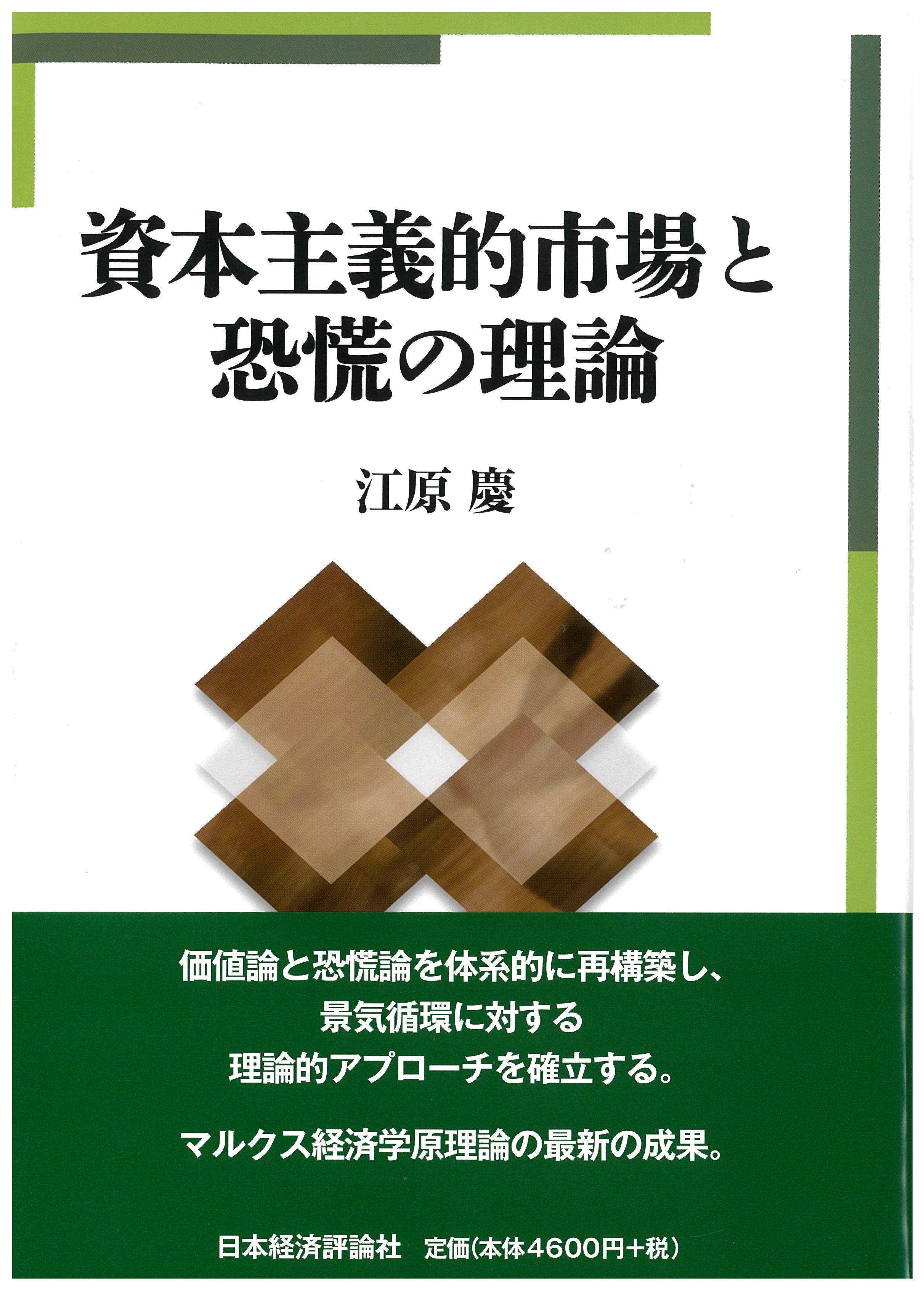
Title
Shihonsyugi teki Shijyo to Kyoko no Riron (Capitalist Market and Crisis)
Size
260 pages, A5 format
Language
Japanese
Released
April, 2018
ISBN
978-4-8188-2498-0
Published by
Nihon Keizai Hyoronsha Ltd.
Book Info
See Book Availability at Library
Japanese Page
The effects of the 2008 financial crisis were felt worldwide, including in Japan. I was an undergraduate student at the time and remember people were talking about the economic crisis everywhere. A change of government occurred in both the US and Japan and the unemployment rate shot up, especially among the younger generation. These events all represented the social disturbance.
It was a result of these events that I became interested in the study of economic crises. In Japan, there is a long history of analyzing economic crises from Marxian points of view. Indeed, Marxian economics in the University of Tokyo has been the world highest standards. Studying Marxian economics is the most natural path for those wishing to examine economic crises.
You may think Marxian economics is outdated. Yes, it is. Then, why don’t we change it? When we have abundant preceding studies, ignoring them is not considered an academic attitude; we must investigate and update them as necessary.
There are several types of crisis theory in Japan. I follow the theory asserted by Kozo Uno, in which the increase in wages inducing a profit squeeze is deemed the fundamental cause of a crisis. However, its strength lies in the relationship between industrial accumulation and credit dynamics. According to Uno’s crisis theory, the profit squeeze leads to a shortage of financial funds, consequently raising the rate of interest, which triggers the outbreak of the crisis. Uno’s work is one of the earliest attempts to consider the financial relationships in the Marxian theory of crisis.
Nevertheless, this theory cannot be applied to the recent financial crisis. We cannot observe any rise in wages prior to the crisis phenomenon, nor a conspicuous increase in the interest rate. The fundamental cause of a crisis could change as capitalist society historically transforms itself.
In this book, I investigate the market system using price equations, which the Uno school has never authentically dealt with, in order to determine another fundamental cause of the crisis. Formulating the conditions of production, I examine market stability so that we can grasp how the market is destabilized and the crisis formation is facilitated within market relationships.
Consequently, the theory of crisis is expanded to incorporate dual models of the economic crisis: a conventional profit-squeeze type model, and another based on market instability accompanied by financial speculations. Historical conditions determine which type appears in actual processes. This is a “polymorphic approach” that is newly employed by some Japanese researchers in various other fields of Marxian economics such as the theory of money, capital and labor markets, and so on.
It is true that financial instability is also analyzed in more recent approaches, such as Hyman Minsky’s “financial instability hypothesis.” However, Japanese Marxian studies provide us with a more holistic perspective that encompasses the sphere of production in its entirety. Unfortunately, most achievements of Japanese Marxian economics are not available in other languages. It is our future task to share them in English and develop the arguments under global collaboration.
(Written by: EHARA Kei / March 25, 2020)




 eBook
eBook